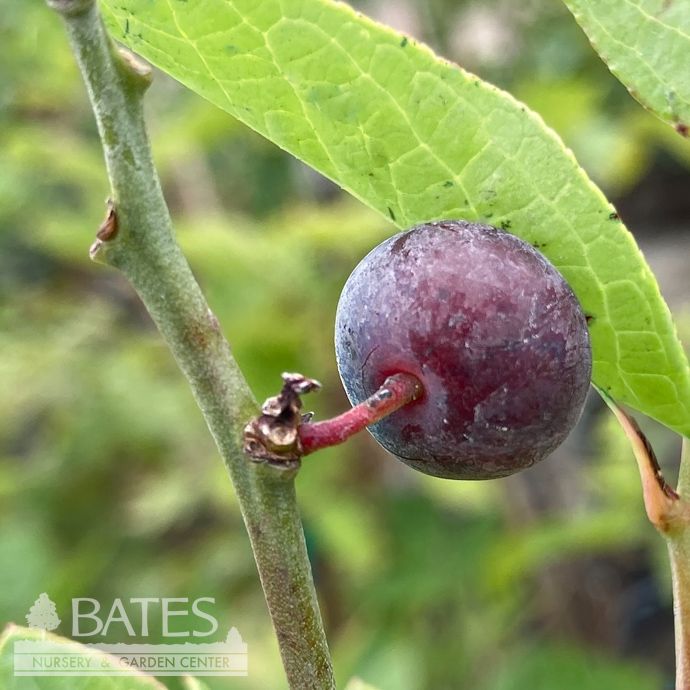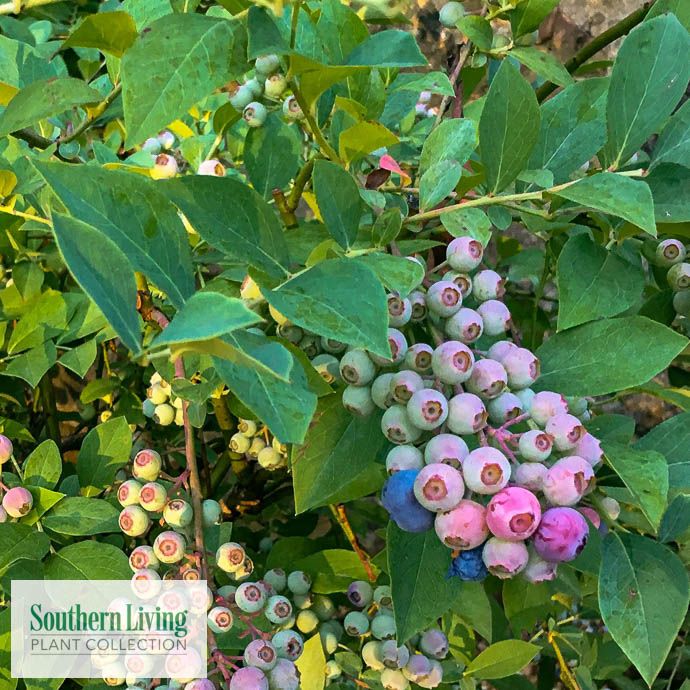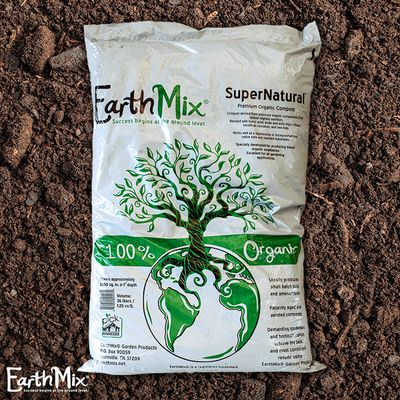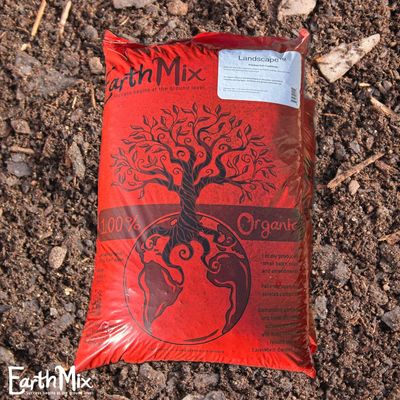Edible #1 Vaccinium ashei SL Takes The Cake (Vernon)/ Rabbiteye Blueberry Native (TN)
Edible #1 Vaccinium ashei SL Takes The Cake (Vernon)/ Rabbiteye Blueberry Native (TN)
SCIENTIFIC NAME: Vaccinium ashei 'Vernon' PP 18291
COMMON NAME: Vernon Rabbiteye Blueberry, Downhome Harvest 'Takes the Cake' Blueberry
GARDEN SIZE: 5-8 feet tall x 4-6 feet wide
GROWTH RATE: Reaches maturity in 6-8 years
USDA ZONE: 6-9
CHILL HOURS: 450-550
EXPOSURE: Full Sun
WATER & SOIL: Acidic, well-drained soil high in organic matter
HABIT (FORM): Upright, multi-stemmed, woody shrub
FOLIAGE: Deciduous with blue-green leaves that turn red-orange in autumn
FLOWERS: Clusters of small, bell-shaped, pink and white flowers
BLOOM TIME: Early spring
HARVEST TIME: Late spring to early summer
POLLENIZATION: Rabbiteye blueberries (Vaccinium ashei) require pollen from another genetically distinct rabbiteye variety in order to produce berries. Plant this bush near at least one other rabbiteye that blooms around the same time to encourage cross-pollenization. Some hybrid blueberries are compatible with rabbiteye blueberries as well.
POLLENIZATION PARTNERS: Recommended partners for Vernon/'Takes the Cake' include mid- to late-blooming rabbiteyes such as Alapaha/'Bless Your Heart', Brightwell, Climax, Powder Blue, Premier, and Tifblue. Alapaha is an especially good match for Vernon, blooming at the same time.
FRUIT: A high yield of large, firm, powder-blue berries with good flavor
CARE: When planting, condition the soil in an area twice the diameter of the root ball with peat moss or a soil conditioner like our Earthmix Landscape. Mix soil conditioner with existing soil in a 50/50 ratio.
Mulch with 2-6" of straw, wood chips, or other organic matter to help regulate moisture. Leave a gap of a few inches around the trunks to prevent damage to the stems from staying wet.
Blueberry bushes need about an inch of water every 7-10 days, though young bushes need a little more during their first growing season while they establish roots. When the rain provides insufficient water, give a deep soak to the soil around the base of the plant once or twice per week. A good rule of thumb is 1 gallon of water per square foot of surface area under the plant's canopy.
Fertilize each spring and fall with Holly-tone or another fertilizer for acid-loving plants.
Prune in late winter to early spring while the plant is dormant. Remove weak canes and low-growing shoots that will be shaded by other limbs or touch the ground.
When your blueberry bush is about six years old, you may notice older canes becoming less productive. At this stage, begin cutting 10-15% of the thick gray older branches back to 6-12" from the ground each year. This will allow the canes to completely refresh themselves in a five year cycle.
PET SAFETY: May cause gastrointestinal issues in cats and dogs if consumed in large amounts, but not commonly eaten by pets. Always research further if you have concerns, as reactions can occur with anything. Also, remember to check the safety of any fertilizers or pesticides applied to your plants.
USES: Edible berries, hedges, borders, fall color
HISTORY: This cultivar was bred by the Coastal Plains Experiment Station in Tifton, GA in 1990. After testing in Georgia, Arksansas, and Mississippi, it was patented and released to the public in 2006. Vernon's ancestry includes rabbiteye cultivars 'Brightwell' and 'Calloway' as well as many other unnamed strains.







